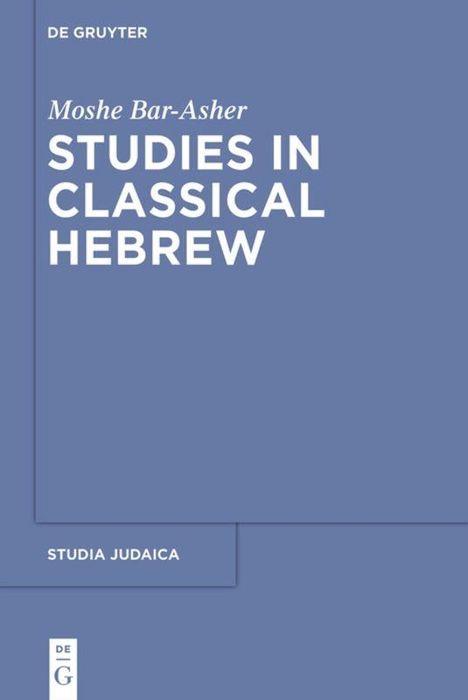Moshe Bar-Asher: Studies in Classical Hebrew, Gebunden
Studies in Classical Hebrew
(soweit verfügbar beim Lieferanten)
- Verlag:
- De Gruyter, 01/2014
- Einband:
- Gebunden, HC runder Rücken kaschiert
- Sprache:
- Englisch
- ISBN-13:
- 9783110300246
- Artikelnummer:
- 1064230
- Umfang:
- 492 Seiten
- Nummer der Auflage:
- 14001
- Ausgabe:
- 1. Auflage
- Copyright-Jahr:
- 2014
- Gewicht:
- 880 g
- Maße:
- 236 x 160 mm
- Stärke:
- 32 mm
- Erscheinungstermin:
- 20.1.2014
- Hinweis
-
Achtung: Artikel ist nicht in deutscher Sprache!
Weitere Ausgaben von Studies in Classical Hebrew |
Preis |
|---|
Klappentext
Professor Moshe Bar-Asher, Professor Emeritus at the Hebrew University and long-time president of the Academy of the Hebrew Language, has published more than 200 articles and sixteen books and edited aboout 90 books and collections. The vast majority of his work has been accessible, however, only to specialists who read modern Hebrew or French. Bar-Asher¿s groundbreaking articles on the dialects of rabbinic literature are classics. In more recent years he has brought the same breadth and depth of grammatical knowledge, and philological acumen, to the study of older classical Hebrew texts, including literary and epigraphic texts. This volume presents studies of individual words and verses within the Bible, as well as broader thematic discussions of biblical language and its long reception-history, down through medieval scribes and modern lexicographers. Also represented are Bar-Asher¿s penetrating studies of Qumran texts and languages, which illuminate both the linguistic traditions reflected in these texts and the scribal culture from which they emerged. The third section contains studies of Mishnaic Hebrew. There are both sweeping surveys of the field and its accomplishments and challenges, and studies of specific phonological, morphological, syntactic and lexical features.


